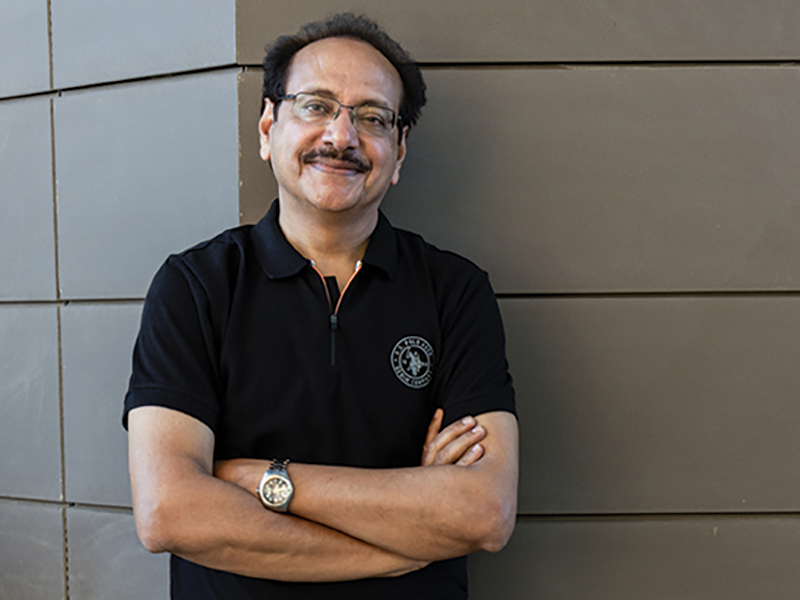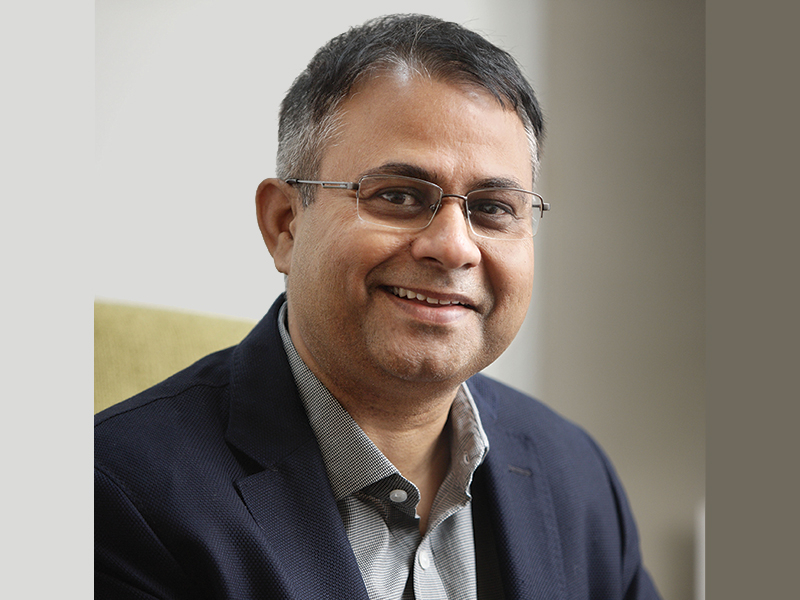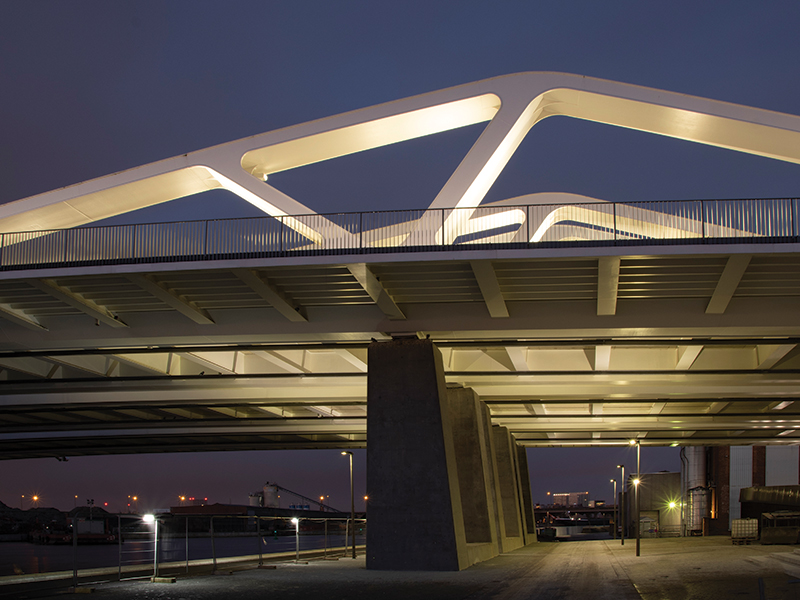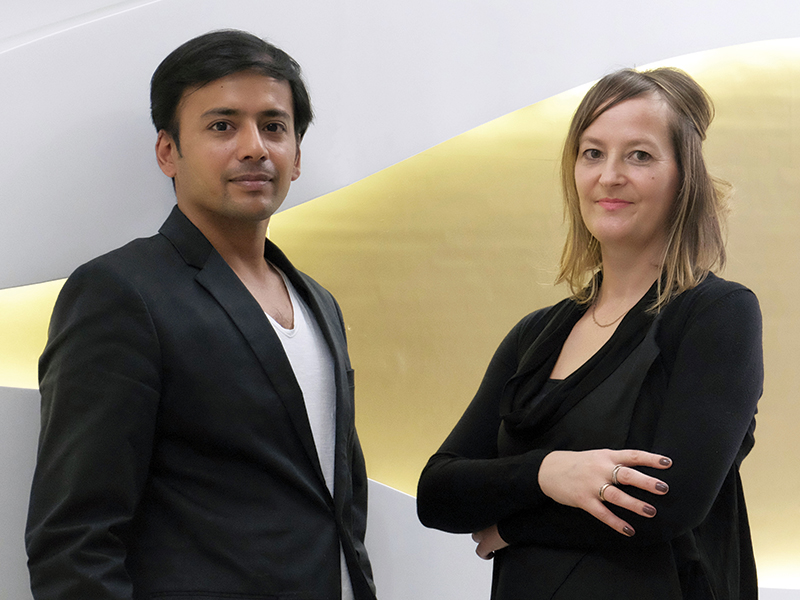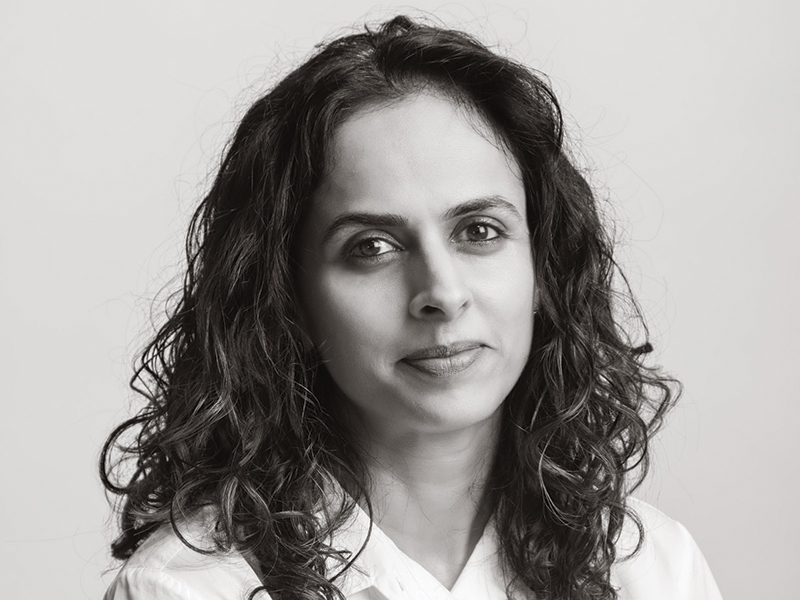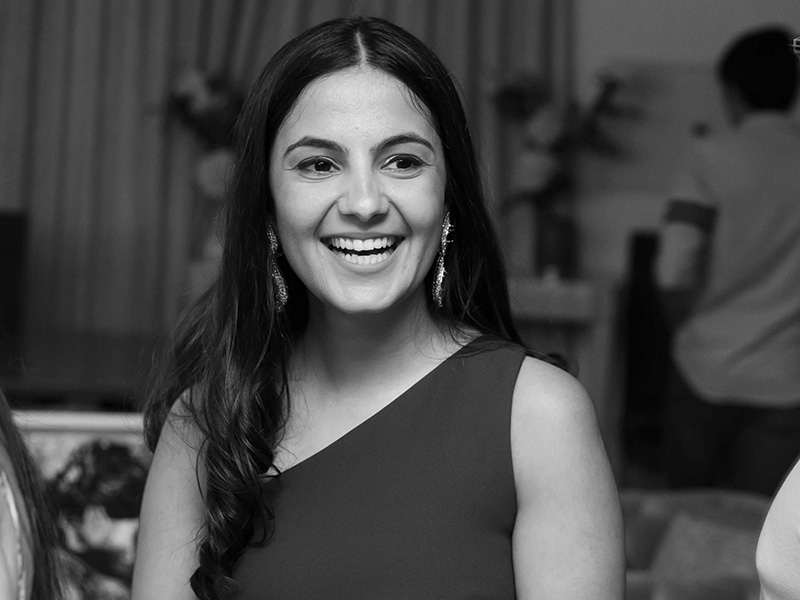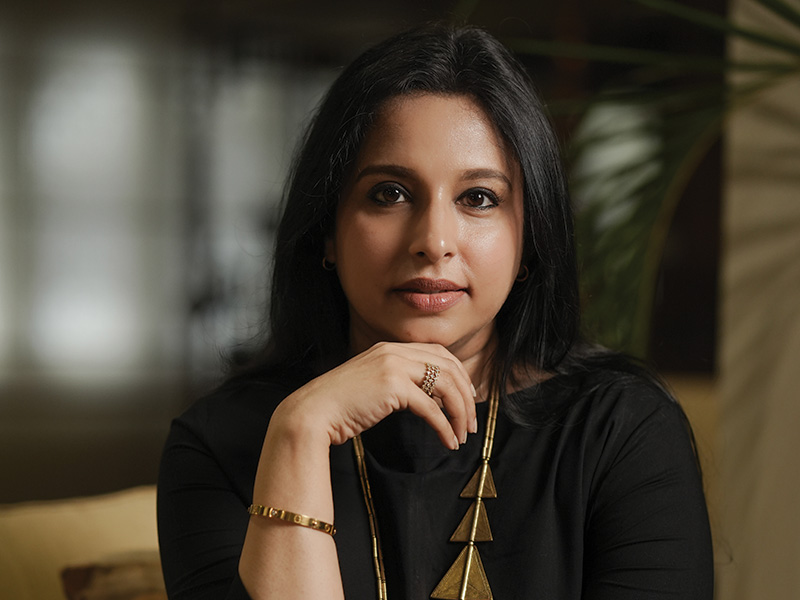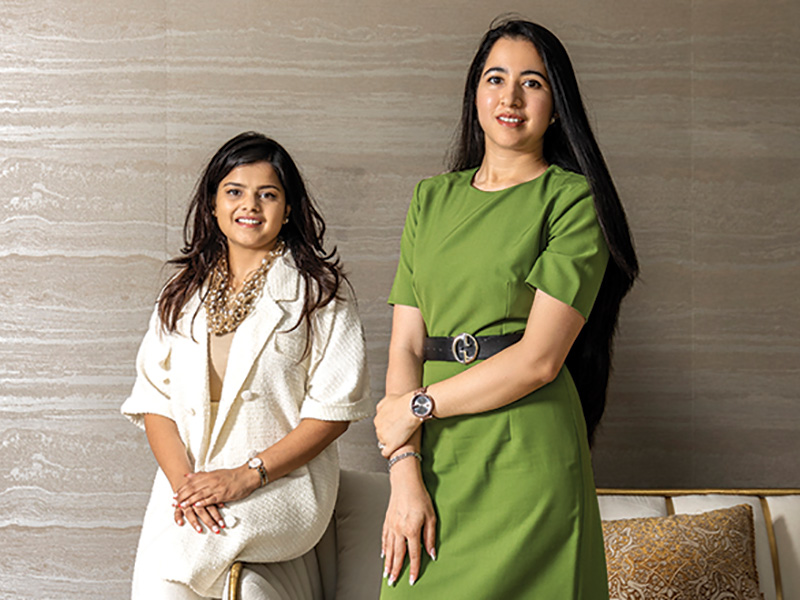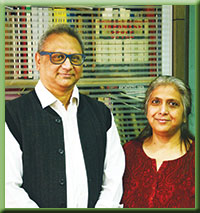
"Architecture is a totality of which we have a crucial responsibility." – Ar. Nirmal
Ar. Nirmal Kulkarni and Ar. Neha Kulkarni are the founding principals of AUM Architects, an international award winning, Gurgaon based firm that has over 25 years of rich experience in institutional, commercial, residential, and interiors projects.
Graduated from the AoA, Mumbai, Ar. Nirmal's engagement with the design of built environment reflects the goal of evolving an architecture which heightens the sensory experience. This is achieved by weaving an intricate web of spaces which harmonize the hierarchies of volume, scale, materiality, color, & technology, aiming to reach a synthesis whilst addressing programmatic conditions.
As a practicing architect, he has the ability to traverse the boundaries between education and the practice of architecture & design. His work and the academic focus dwell on architecture being experienced primarily as sense of place. He has varied interests and talents, from designing human habitat, book covers and expressing himself through varied mediums of art, including digital art. He believes that design can be the 'tool', which can help resolve big and small issues in the world, through creative thinking, innovative strategies and out of the box solutions.
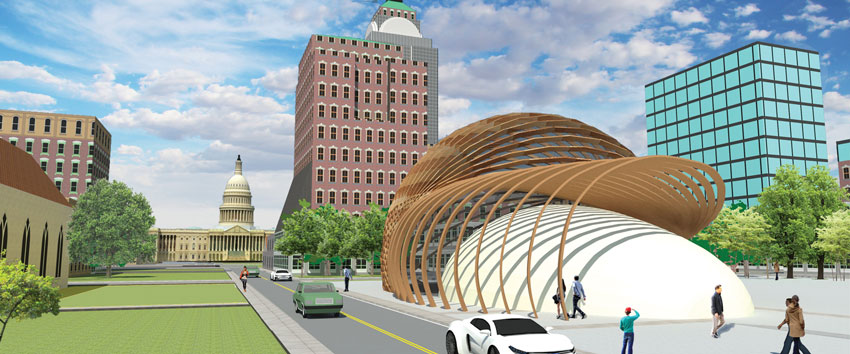
Ar. Nirmal feels that design constantly challenges the status quo and looks to innovation and cutting edge thinking to push the boundaries of what the possibilities are, thereby addressing & evolving new design paradigms. He says, while pushing the boundaries of design we believe that great architecture marries the interests of all the stakeholders harnessing the latest in technology, materials and processes to deliver a project that lives up to its promise in terms of time, costs and quality and quantity.
He is one of the founding members of a "not for profit" organization called Investigating Design–INDES which believes that design is an everyday phenomenon and its vision is to be enablers to make design available to everyone. Using INDES as a platform, Ar. Nirmal conducts design workshops for school children from the underprivileged communities to seed design thinking in the minds of the future generations of Indians.
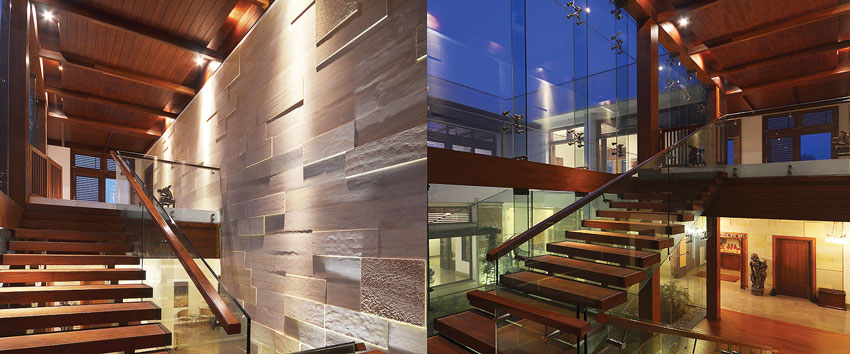
He has won many awards including the STEAM AWARD for the Museum of Science Fiction, Washington, USA, and has been shortlisted for the International design competition by Japan Design Foundation and has been invited to design the cover page for their magazine - DESIGN SCENE. Ar. Nirmal is an avid nature photographer, and idolises B. V. Doshi, Charles Correa from the Indian context and Rem Koolhaas & Thomas Heatherwick from the international context. He believes in working towards a sustainable and relevant architecture for India, and consciously, conscientiously and mindfully doing his own bit towards that goal.
He perceives the current Indian trends of 'over-building' to be the bane of good architectural practice.
"We see architecture as a system of complex interactions between people, forces and materials, operating within the framework of technology & time." – Ar. Neha
Graduated from Sir J. J. College of Architecture, Mumbai, Ar. Neha has accumulated a varied experience by working on selected Planning & Research Projects. She was a part of the design team that won the Delhi Co-operative Finance &Housing Scheme Competition.
With a rich and varied experience of over 25 years working on institutional buildings, commercial projects and office interiors, Ar. Neha believes that design constantly challenges the status quo and looks to innovation and cutting edge thinking to push the boundaries, thereby addressing & evolving new design paradigms. We want to be an integral part of "Design for Communities" and therefore strive to address the needs of people in a sort of "open source" approach to life. The essence of our way of designing is to address the fundamentals through intense programming & offer solutions for creating designs that have a positive impact on the environment.
"We at AUM, she says, are committed to architecture that adds cultural value and benefits society 'beyond buildings'. We think of architecture as the design of unique lifestyles. Buildings act as the face of their inhabitants. Rather than fitting clients into existing stereotypes, we help them explore the possibilities of a lifestyle tailored to their personality. Architecture can be both a site of self-expression and chance for the client to fulfill their dreams and hopes - and that's true regardless of site conditions, scale, or budget. Rather, those limitations become the motivation to create an even more attractive structure. We, as architects, don't design buildings alone. Time spent talking, thinking, and working through problems in collaboration with the client is an indispensible part of the process. Through extensive meetings and proposals, we seek to draw out the essence of what the client wants but may not be able to express.
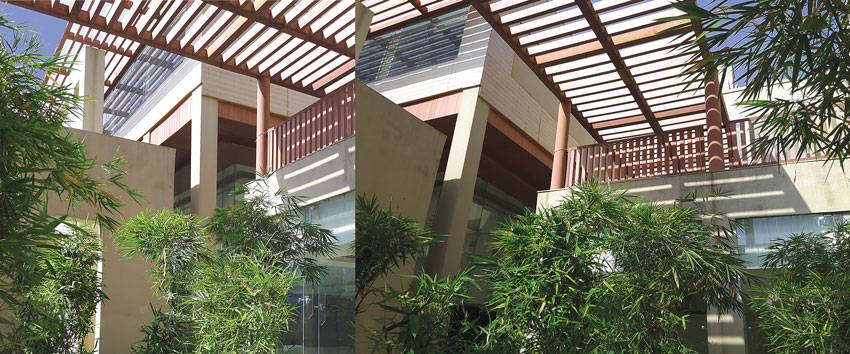
As a part of Architect Ashok B. Lall's team, she worked on projects that were nominated for the Aga Khan Award 1994. She was also a key member of the design team that won the Indira Gandhi Memorial Cultural Centre Competition organized by the Lucknow Development Authority and the M.G.R. Memorial Competition, Chennai. Having worked as a design participant for the Institute of Health Management Research, she has an insight of achieving green building standards with efficiency. One of the interesting projects she has undertaken includes the interiors of the Times of India building in Delhi. The design components from the Havelis of Rajasthan were brought to Delhi and reconfigured to uplift the existing building interiors.
She has been working closely for international projects in association with the Japanese corporation, Shimizu. Under the same collaboration she has designed and managed projects for Mitsubishi, Toshiba, Honda R&D Centre, Bank of Tokyo, New Delhi and Mumbai, Mizuho Bank in Delhi and Mumbai. The projects she has been a part of are not only green field projects but also brown field where the main challenges have been to create a new identity and bring up a fresh image without having to salvage the building's structure.
